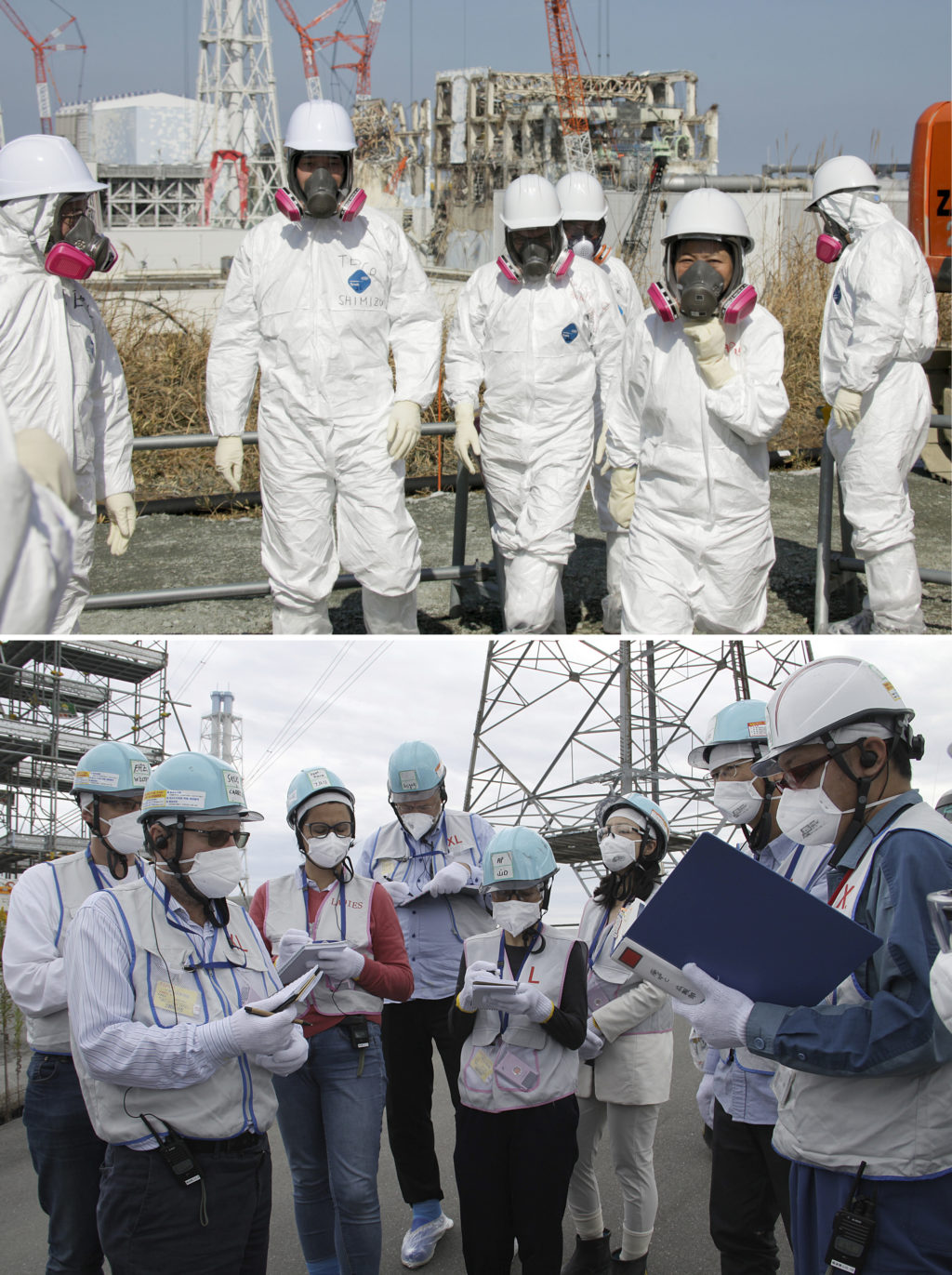Reporter’s Notebook: Fukushima face-lift masks morass inside

This combination of photos show journalists visiting the Tokyo Electric Power Co.,’s Fukushima Dai-ichi nuclear power plant, top photo taken Feb. 28, 2012 while bottom photo taken on Oct. 12, 2017, in Okuma, Fukushima prefecture, northeastern Japan. Visitors no longer must put on hazmat suits and full-face charcoal-filter masks, or plastic shoe covers, unless they are going to the most contaminated areas. Journalists donned the gear for low-dose areas: a helmet, double socks, cotton gloves, surgical mask, goggles, and a vest with a personal dosimeter. (AP Photo)
OKUMA, Japan — Above ground, the tsunami-hit Fukushima nuclear power plant has had a major face-lift since the 2011 disaster. Inside and underground remains largely a morass.
A stylish new office building was the first thing that came into view during a tour for foreign media last month. Another building has a cafeteria and a convenience store. It’s easy to forget you’re in the official no-go zone, where access is restricted.
We first went through automated security checks and radiation measurement at the new building, where 1,000 employees of Tokyo Electric Power Co.’s decommissioning unit work. A sign prohibits games such as Pokemon Go.
Visitors no longer must put on hazmat suits and full-face charcoal-filter masks, or plastic shoe covers, unless they are going to the most contaminated areas. We donned the gear for low-dose areas: a helmet, double socks, cotton gloves, surgical mask, goggles, and a vest with a personal dosimeter.
There was little reminder of the devastation from 6 ½ years earlier. The highly contaminated debris and mangled vehicles are gone. The feeble-looking plastic hoses mended with tape and the outdoor power switchboard that rats got into, once causing a blackout, have been replaced with proper equipment.
A new curved cover has been built over the Unit 3 reactor, whose roof was blown off, leaving a mess of girders, concrete and cables. A horizontal smudge high up on a nearby waste-storage building marks the height of the tsunami: 17 meters, or 56 feet.
The 900 huge tanks built to store a growing volume of radioactive water tower over visitors. A water management team monitored the contaminated water at what was once the crisis command center. Strings of good-luck, folded-paper cranes still hang in the hallway.
The tanks underscore the challenges that remain, in the basements of the reactor buildings, where the water collects, and deep inside the three reactors that had meltdowns.
Remote-controlled robots provided a limited view of the melted fuel earlier this year, in areas where it is too dangerous for humans to go. The exact location of the fuel remains largely unknown. It was an early step in the still-uncertain, decadeslong plan to decommission the plant.